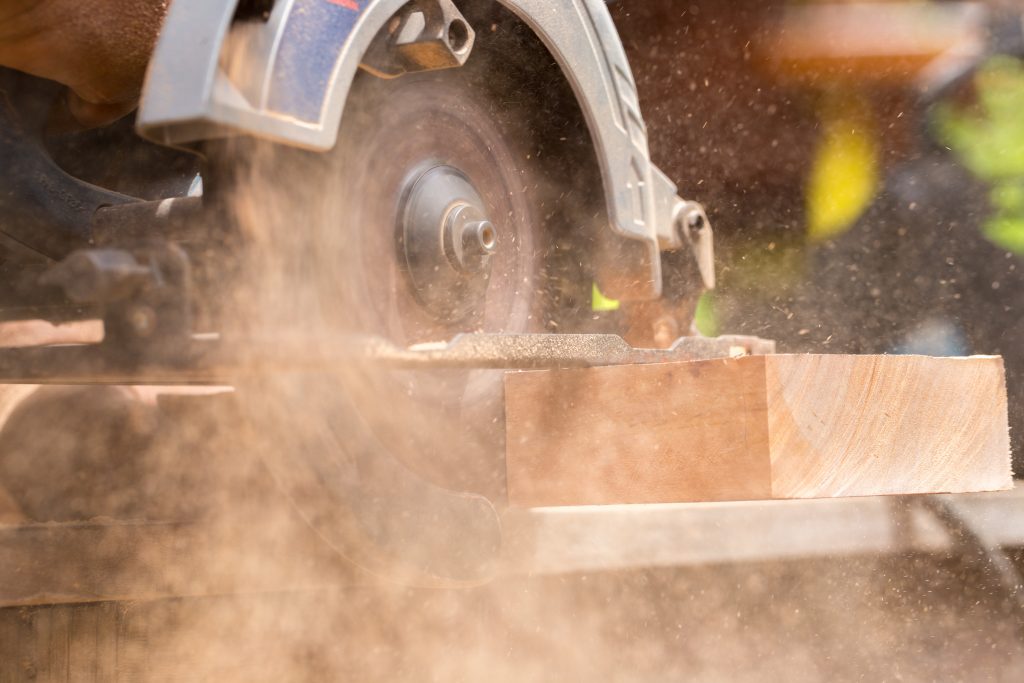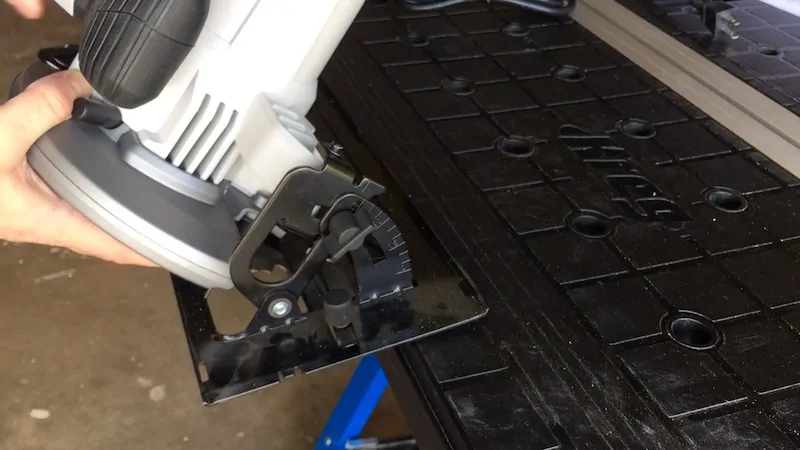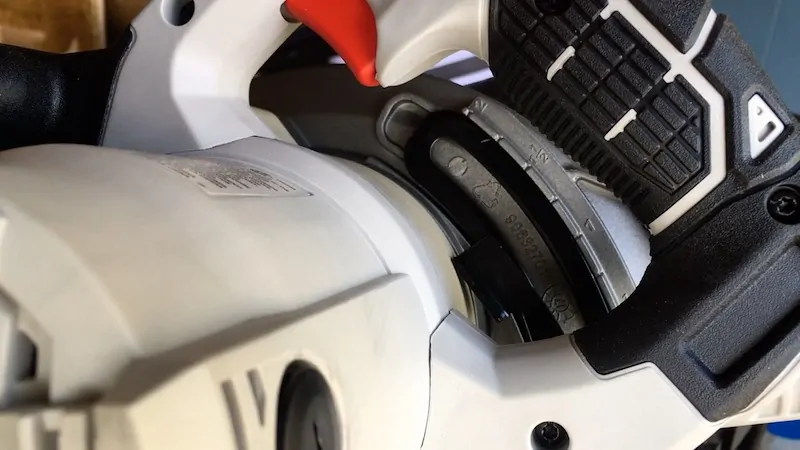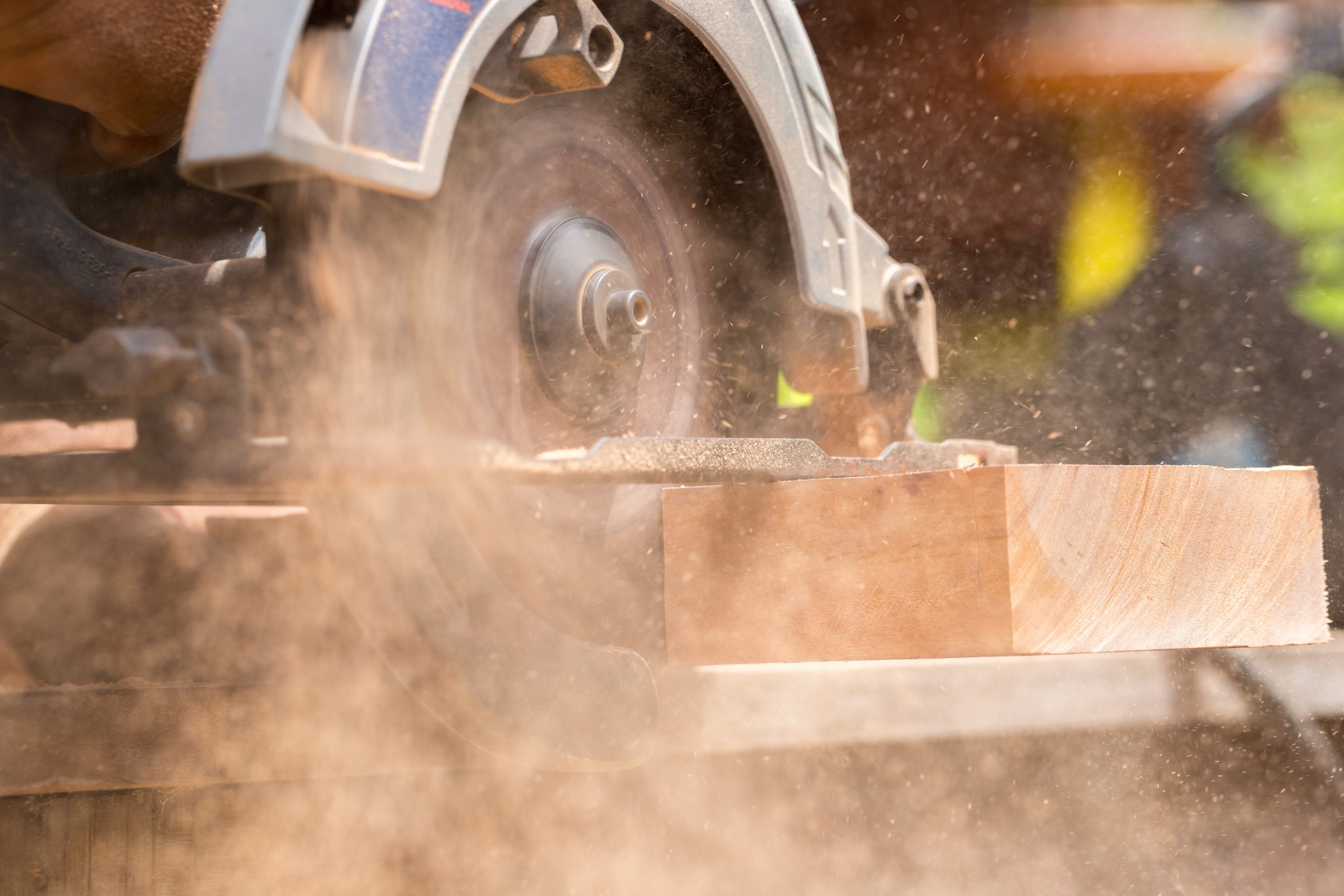A circular saw is a popular tool for woodworking, DIY, and many other trades such as homebuilding. It is important enough that I include it in my post on the essential tools you need for woodworking.
Powerful tools can help make a woodworking job so much simpler. Circular saws are designed for both beginners and professionals to use with ease. They can be convenient in making straight cuts in various types of materials.
If you are in the market for a circular saw be sure to check out this article on the best circular saws for beginners.

What is a circular saw used for?
Though wood is the most well-known material to use with circular saws, this machine can handle a variety of materials. With the correct type of blade, you can cut through almost any material, from metal to stone.
When you learn how to use circular saws safely through practice, they can help you put together many DIY projects. It is one of many valuable power tools for you to have in your arsenal.
Most Common Uses
Circular saws are not for all types of work, but they can do quite a lot. Its size, power, and brake system enable the circular saw to perform various cutting jobs with precision on multiple materials. It is common to see these on a job site. I use my saw frequently for sizing down large sheets of plywood.
Straight Cuts
As a handheld power tool, circular saws are perfect for achieving cuts in wood up to 2.5″ to 3″ deep. These cuts will be straight because it is impossible to turn the tool as you cut (only slightly and at a shallow depth).
You first set the cut depth by setting the length of the blade that sticks out from the saw’s base. Then line it up with where you want to cut your material.
When a circular saw uses a blade with more teeth, it can create smooth cuts, while a blade with fewer teeth causes more abrasive but quick cuts. You can make two types of straight cuts using this machine: cross-cuts and rip cuts.
Cross-Cuts
Shortening the length of longboards and timber can be done by cross-cutting them using a circular saw. You can make cross-cuts by slicing the wood across the grain or cutting them along the board’s width. This technique is great to use in place of a miter saw if you cannot move the workpiece to the miter saw.
Circular saws are helpful in cross-cutting because they provide a faster and easier method than a jig or table saw. Square-cut guides or guide rails can help direct the saw and keep your cuts accurate and smooth.
Rip Cuts
Rip cuts are cuts along the length of the wooden board. These cuts are often longer and “rip” apart wooden boards with the assistance of a rip attachment or another longboard to help you cut narrow strips precisely.
A table saw is my tool of choice for rip cuts, but there are situations where a circular saw may be better. For example, a large sheet of plywood can be unwieldy on a table saw by yourself. Setting this board on the ground and using a circular saw with a guide can be a better way to rip a large sheet of plywood.
Creating Bevels

Bevels are angled cuts with respect to the surface of your material. Circular saws can create bevels at a 45-degree angle, but the depth of the cut cannot be at max depth.
I have found bevels to be one of the more difficult cuts to make with a circular saw, especially as you approach 45 degrees. If at all possible, it is best to use a table saw for this task.
Cutting Plywood
Cutting plywood with a circular saw is difficult unless you use some kind of guide. Track saws are made with this in mind. Circular saws are a popular choice for cutting plywood, as they can cut through the wood quickly and easily.
Without a track saw, you can use a long straight edge or other guide and clamp it to the plywood. This technique takes some time to perfect because you have to account for blade width and the space from the blade to the guide.
Cutting Metals
Circular saws are used to cut metals like brass, steel, and bronze. Cutting this metal sometimes requires a heavy-duty tool or specially designed saw. It also requires the correct blade style. You cannot use a 24-tooth rip-cut saw blade for cutting a sheet of aluminum.
The thickness and density of the material will be the limiting factors.
Components of a Circular Saw
A circular saw is a handheld machine made up of the blade, blade cover, plate, bevel adjustment, and power switch. It is often portable and easy to carry. The different components play a significant part in how well the circular saw performs on wood and other materials.
Blade
The type of blade you use will affect the kind of cut you make into the wood. The one that comes with every circular saw is designed for coarser work as it makes more aggressive cuts. If you want to make more precise cuts, you can find blades at hardware stores to replace them. You can switch the blade out using the included wrench and the rotation lock button.

I recommend not going too cheap on the blade. You will find that more expensive blades last longer and do a better job.
The number of teeth on the blade also makes a difference in how smooth your cut looks. If you want to make cuts into metals, stone, or other hard surfaces, there are different blades you can purchase for those. Do some research beforehand to know what type of blade is best for your material.
It is important to keep your blade clean. This will allow it to cut cleanly and efficiently. For more information on keeping your blade clean you can visit my article here on how to clean a circular saw blade.
Blade Depth

Using the proper blade depth minimizes the kickback amount you experience while using your circular saw. Kickbacks can be caused by incorrect depth, blade-binds, and cut-offs not falling away from the saw. It can happen to even the most experienced carpenters, so it is vital to make sure you adjust the height appropriately.
Blade Cover
The cover acts as protection against any accidental contact with the sharp blade. It fits over the bottom and top of the blade, with a small opening to make cuts to various objects. The cover also prevents debris from flying everywhere as you are cutting.
Plate
The plate surrounds the saw and lets the user set it down steadily while cutting. It acts as a guide when you move the saw along with the material.
Bevel Adjustment
Located near the front of the circular saw, the bevel lever adjusts the bevel angle when cutting. It sits right on the plate and allows the user to easily make angles in the material. You can use the plate tilt lever on some models to make your angles more precise.
Power Switch
The trigger underneath the handle can turn it on and off during use. Some models have an electrical brake that can stop the blade from spinning when the trigger is turned off in just two seconds.
I love having a brake because the blade stops spinning quickly instead of spinning for several seconds. This feature is good for safety and helps you work faster.
Who Uses Circular Saws
Circular saws are great for beginners to use for their home projects. They are an essential tool for many DIY projects to make straight cuts on various materials, and for making the precise cuts carpenters and other professionals need.
You will find circular saws in many industries, including carpentry, construction, home improvement, metal fabrication, demolition, etc. They are key tools for many professionals to use regularly.
FAQ
You may still have some questions about circular saws. We’ve put together a short list of the most common questions related to circular saws for your advantage.
Can I use a circular saw without a table?
The short answer is yes, but you should have a stable workpiece wherever it is. Keeping the material in one hand and using the saw in the other can lead to critical injuries, so it is not advised. You should also properly secure your material for your cuts to be straight.
Does a circular saw cut up or down?
A circular saw can tear out the wood facing up and cut the other side facing down cleanly when making cuts. They are designed to cut forward on the upstroke as the blade rotates.
The good side of the material should always be facing down when making straight cuts so that the teeth of the blade cut against the glossier surface instead of ripping it away. This technique is important in materials such as flooring.
Do you need to oil a circular saw?
Most saws do not need to be oiled, as done during manufacturing. However, worm-drive circular saws are lubricated by oil, and this oil must be routinely checked.
How can I prevent kickback from my circular saw?
Sometimes kickback happens no matter how many precautions we take. There are some steps that will help mitigate this occurrence, however.
When a saw blade overheats, it can warp and cause it to kick back. Debris that collects on the blade can also affect how much kickback it gives. Having the sharp edge at an incorrect depth can also cause kickback at the end of a cut.
To avoid any kickback, keep the blades sharp and clean and minimize blade pinching by allowing the pieces you cut off to fall away from the working material.
Watch out for the board tension squeezing the blade as you cut. Since there is no riving knife like on a table saw, pinching can occur more easily.
Conclusion
Circular saws are for many different cuts. They are not complicated to use but require some practice to use them safely and correctly. These saws can be used to cut many different types of material, but they are essentially designed to make straight and precise cuts.
There are several types of circular saws ranging in price. However, the type of blade will make the most significant difference in properly cutting various materials cleanly. These portable and versatile machines make them easy to use for small and large woodworking projects.
